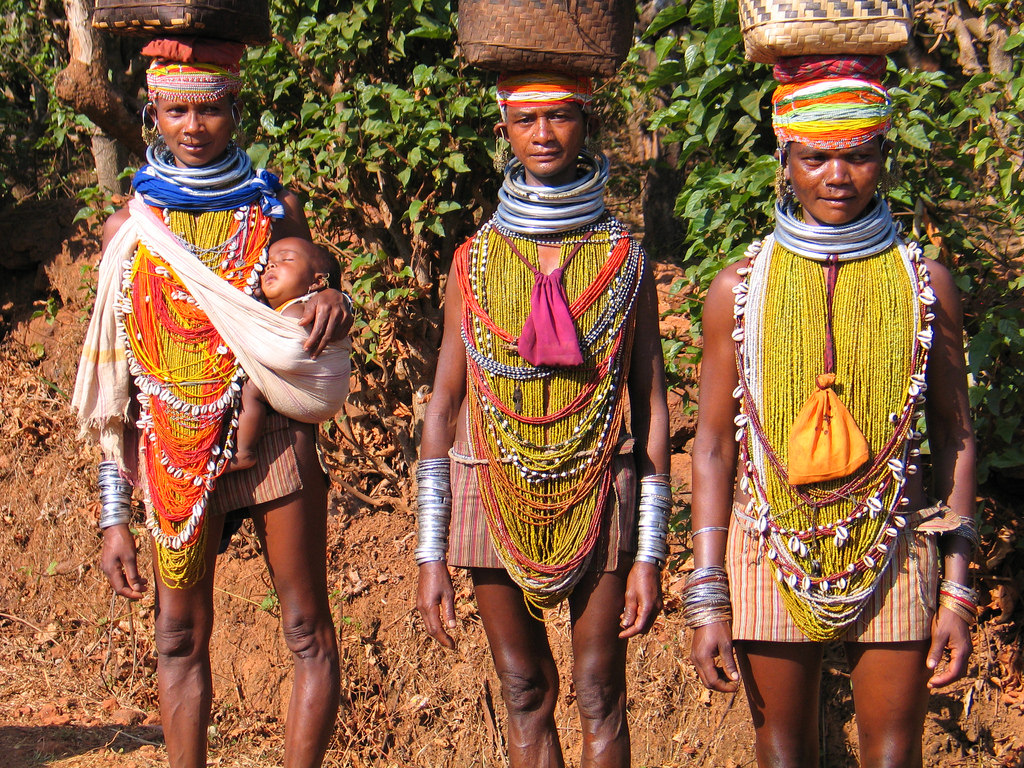The two most crucial features for which Odisha is globally famous are Jagannath Dham and its tribals. While Lord Jagannath is deeply associated with Odisha’s emotions, its tribal sector runs along with nature and culture of the state. Barring costal pockets of the state, the tribals’ presence is largely felt in other areas
The other aspect for which Odisha is talked about is its rich linguistic tradition. Even researchers from abroad are drawn here to study more into tribal language and culture. Since the villages here see a confluence of multi-lingual communities, verbal communication among people within the community takes place in their own language while a third language is used in inter-community communications.
Odisha’s tribals have the ability to retain the identity of their language and culture while simultaneously paying respect to other languages and cultures. And, this is the reason why linguists, sociologists, anthropologists and culture experts choose Odisha as their research subject.
Altogether 62 categories of tribal communities reside in Odisha of which 13 are categorised as underdeveloped communities. On the basis of language, the tribal communities are broadly divided into three categories – Austric or Astro-Asiatic, Dravidians and Indian Aryans. Austric or Munda tribes entered Odisha through two routes – through north-west route from Chhotanagpur plateau and through south-central route from Godavari valley. Those who came from Chhotanagpur plateau area settled in Mayurbhanj, Keonjhar, Balasore, Sambalpur, Dhenkanal, Angul and Jharsuguda areas while those from Godavari valley created their settlements in undivided Koraput and later in Keonjhar and Sundargarh regions, say various sources.
Likewise, Dravidians were stated to have expanded their habitation from southern Odisha to north-western region. Dravidians, believed to be good promoters of assimilation culture, are also known for propagation of palli, haat, dance, music and Shakti and Shaiva culture. The culture of Dravidians is closely linked with agriculture. The assimilation of Dravidians’ and Mundas’ culture was possible when Aryans started residing with them.
Language is the vehicle of culture. When we talk about the modern day language & culture, it’s nothing but an improvised adoption of Dravid-Munda-Aryan versions.
Even today we find use of Shabar dialects in literatures on Jagannath culture. Legends have it that amalgamation of Shabar and Brahmin culture resulted in development of Jagannath culture.
Significantly, linguists have recognised Odisha as a field for discussion on languages while prioritising language research. The tradition of contemplation on language is very ancient and it started since the advent of Aryans who reached Odisha from Koshal and Bengal sides. Massive exchange of language took place due to assimilation of Dravidians and Mundas along with their geographical location.
Tribals, who constitute 22.85 per cent of Odisha’s population, are divided into 62 broad categories while 13 tribal groups are considered underdeveloped. Moreover, there are 21 languages and 74 sub-languages prevalent among the tribals.
To start with, Munda language is divided into two segments – Dakhina Munda and Kherwari. While Dakhina Munda is divided into two sub-sects – Koraput Munda and Kendriya Munda, Kherwari has Santali in one branch and Mundari, Ho, Bhumija and Birhor like interrelated languages in the other. Koraput Munda comprises Saura, Gorum in one branch and Gadda, Gudab and Rem (Bonda) language in the other. However, Gorum language is in the verge of transformation and is being replaced by Desia language. Similarly, Gadda and Gudab languages are gradually losing their existence. Kendriya Munda language consists of Khadia and Juang, and is considered as closer to Koraput Munda language.
If we see Dravidian language, it is divided into two parts – Kendriya and Uttranchanilya. While Uttaranchaliya segment consists of Oraon and Kissan languages, Kendriya segment has three branches – (1) Telugu, Parjee, Olagrir; (2) Kui, Kuvi, Pengu, Kanda; (3) Gondi, Koya, Madia, Muria.
Although there is no clarity as to which main language is connected to Aryanuga sub-language, Desia-Bhatari-HalabiJharia of Dakhinanchala sect appear to be sub-sects that are related to each other. Similarly, Sadari-Laria-ChhatishgadiBhunjia-SambalpuriKandhanbinjhal-Banjara of Paschimanchal branch and Sambalpuri-Bhuyan-BathudiKurmali-Saunti are connected with each other under Uttaranchaliaya sect.
While Dakhinanchaliaya sect of language is largely spoken in undivided Koraput and Kalahandi regions, Paschimanchaliya sect is used in Kalahandi, Bolangir, Sambalpur and Sundargarh. Likewise, Uttaranchaliya segment is spoken in Sundargarh, Keonjhar and Mayurbhanj. These three segments hold significance in culture and language-based studies. All these languages are spread over the plateaus of Odisha. Inter-connection between languages is seen due to rule by various administrative centres on different occasions.
Excerpts from Paramananda Patel
